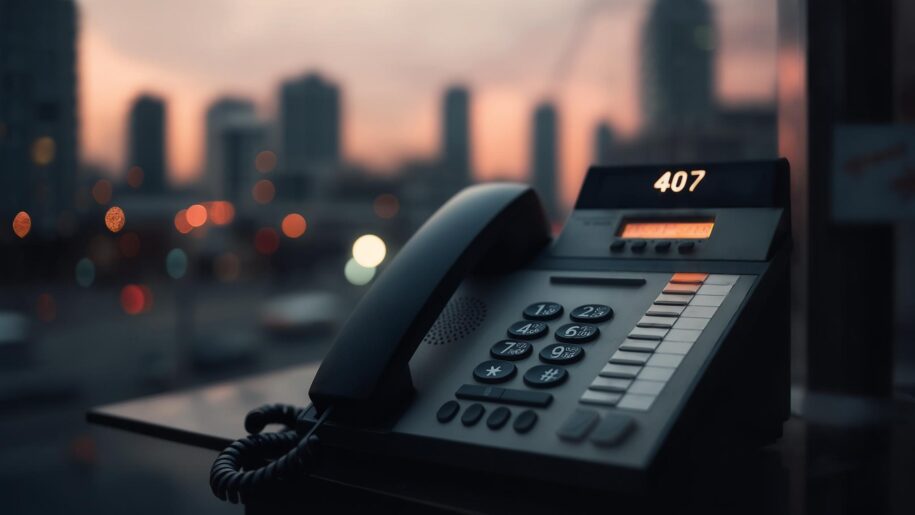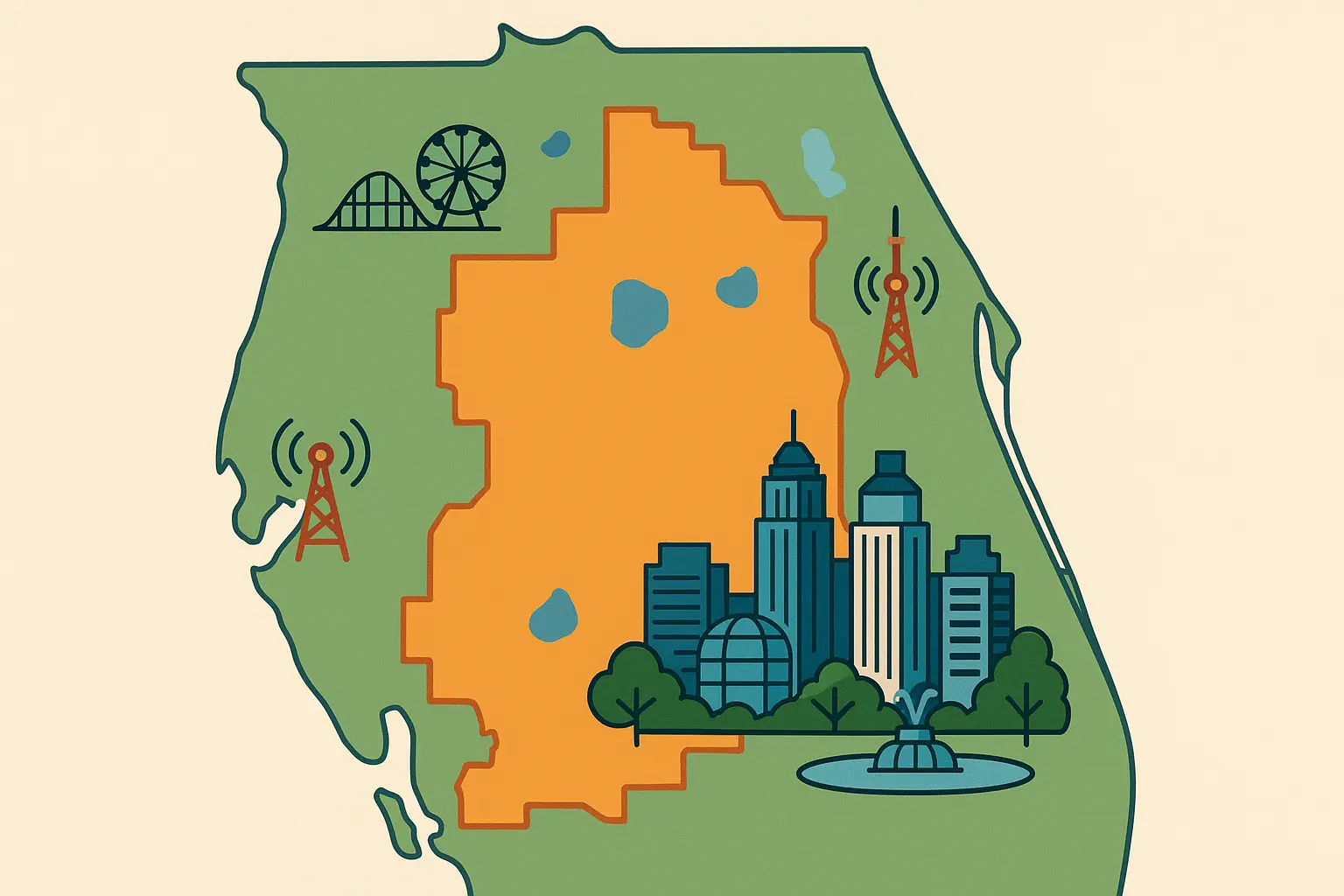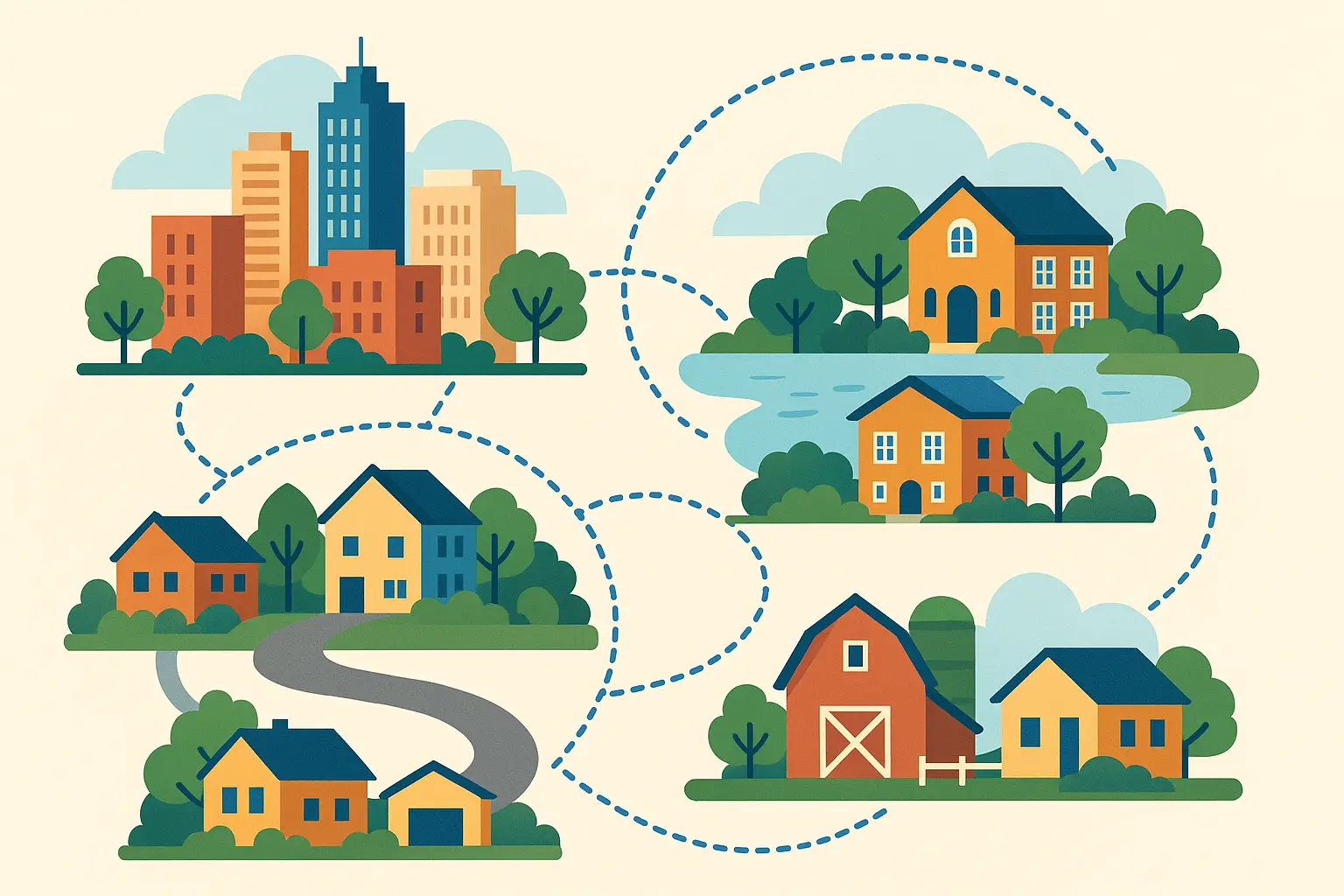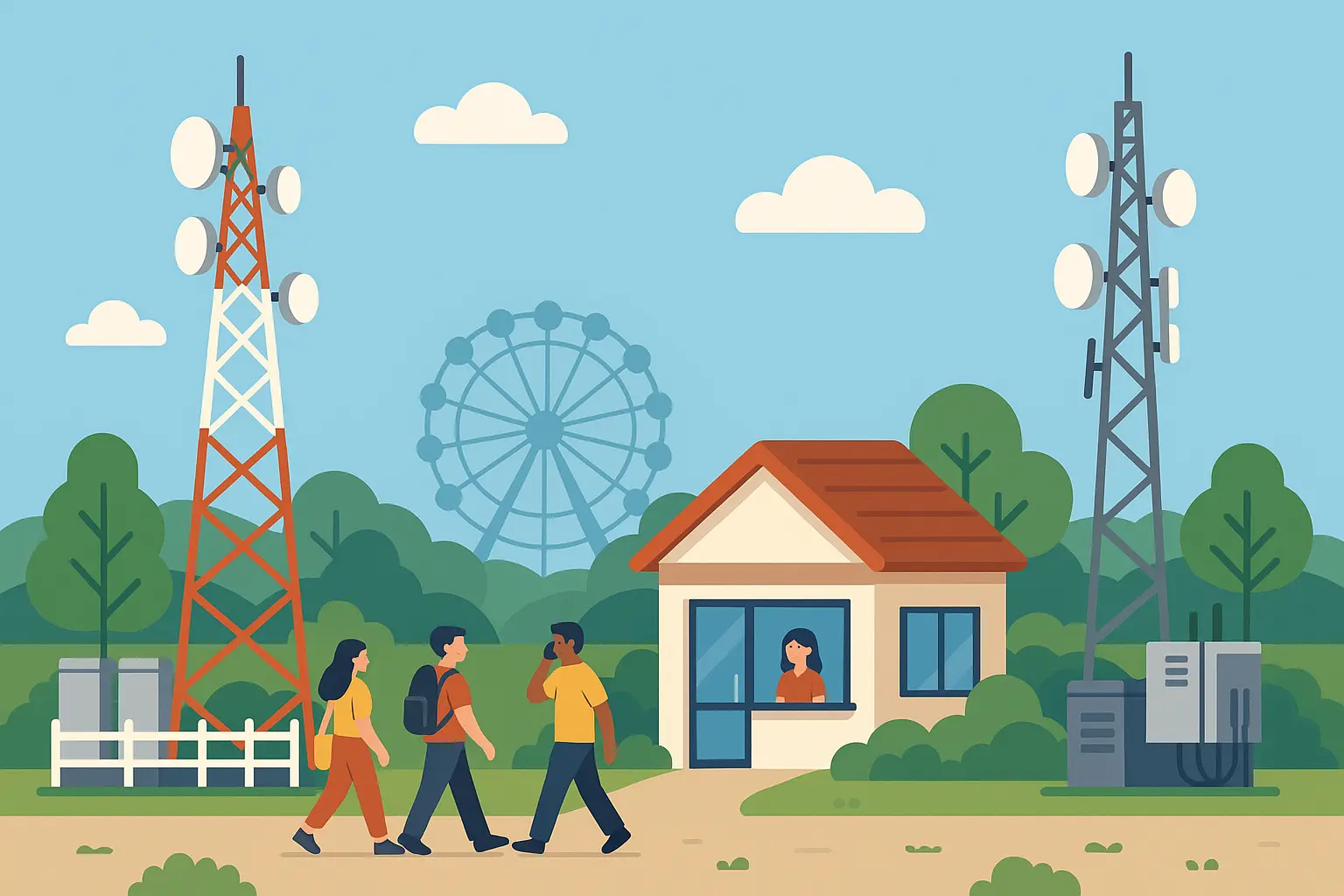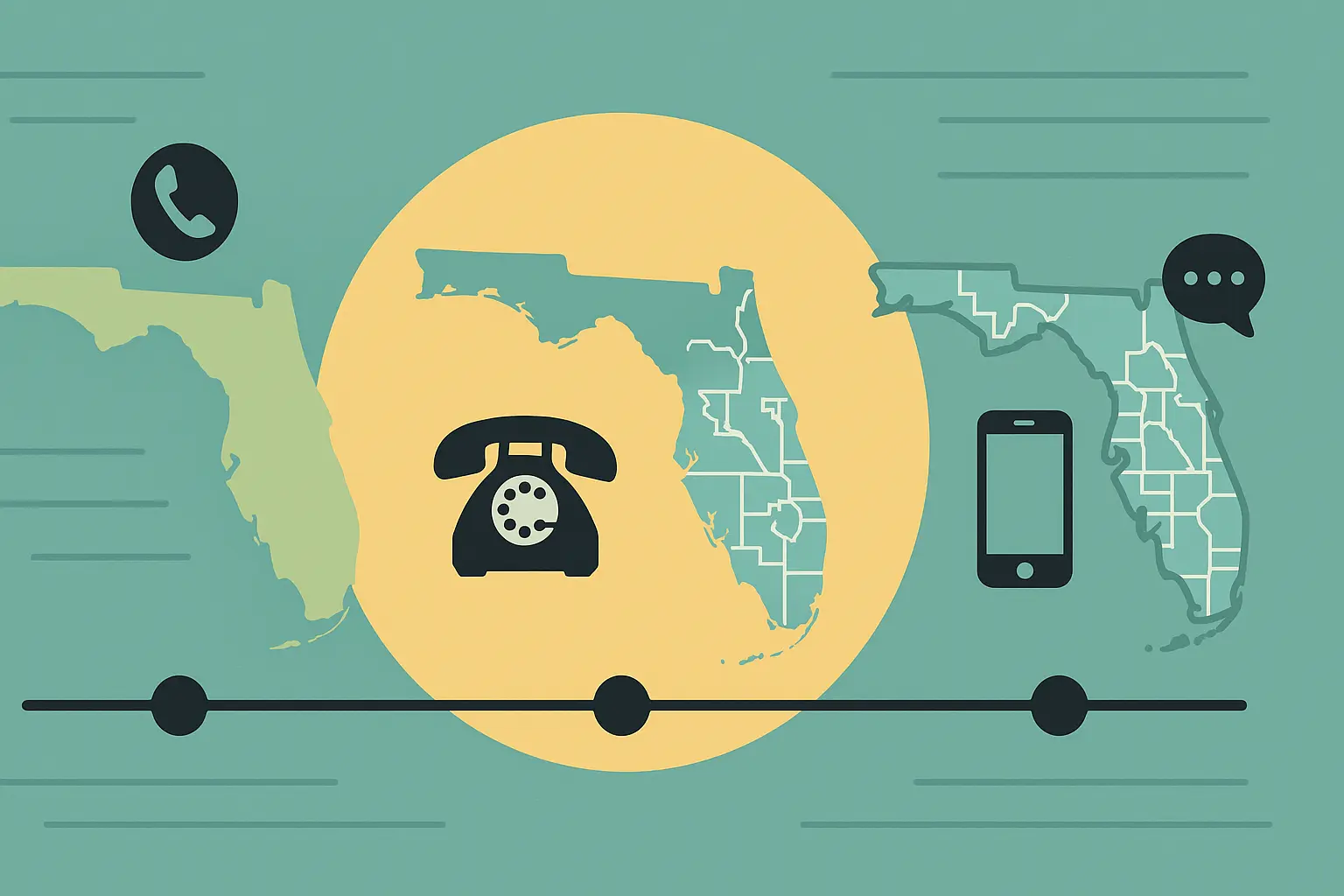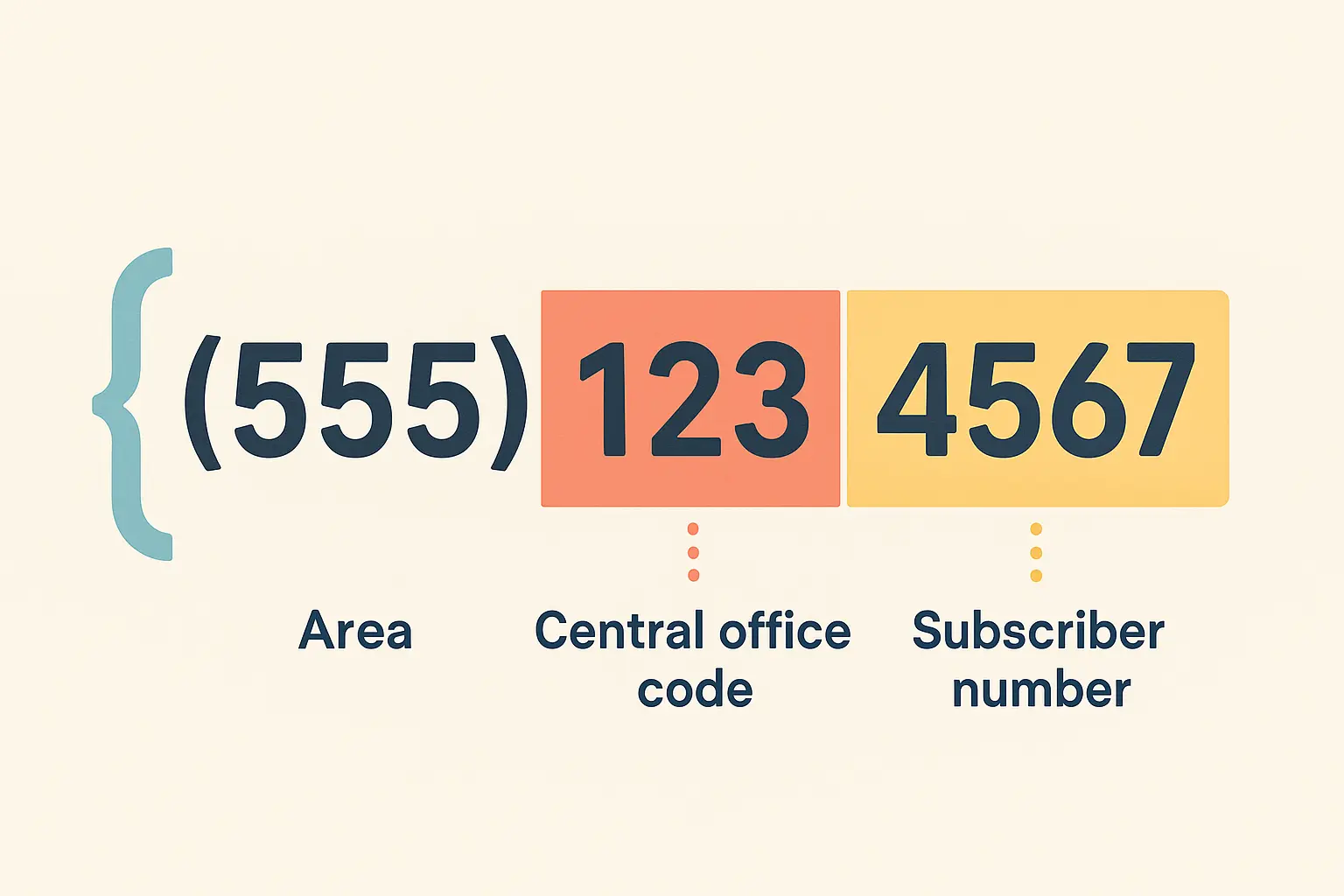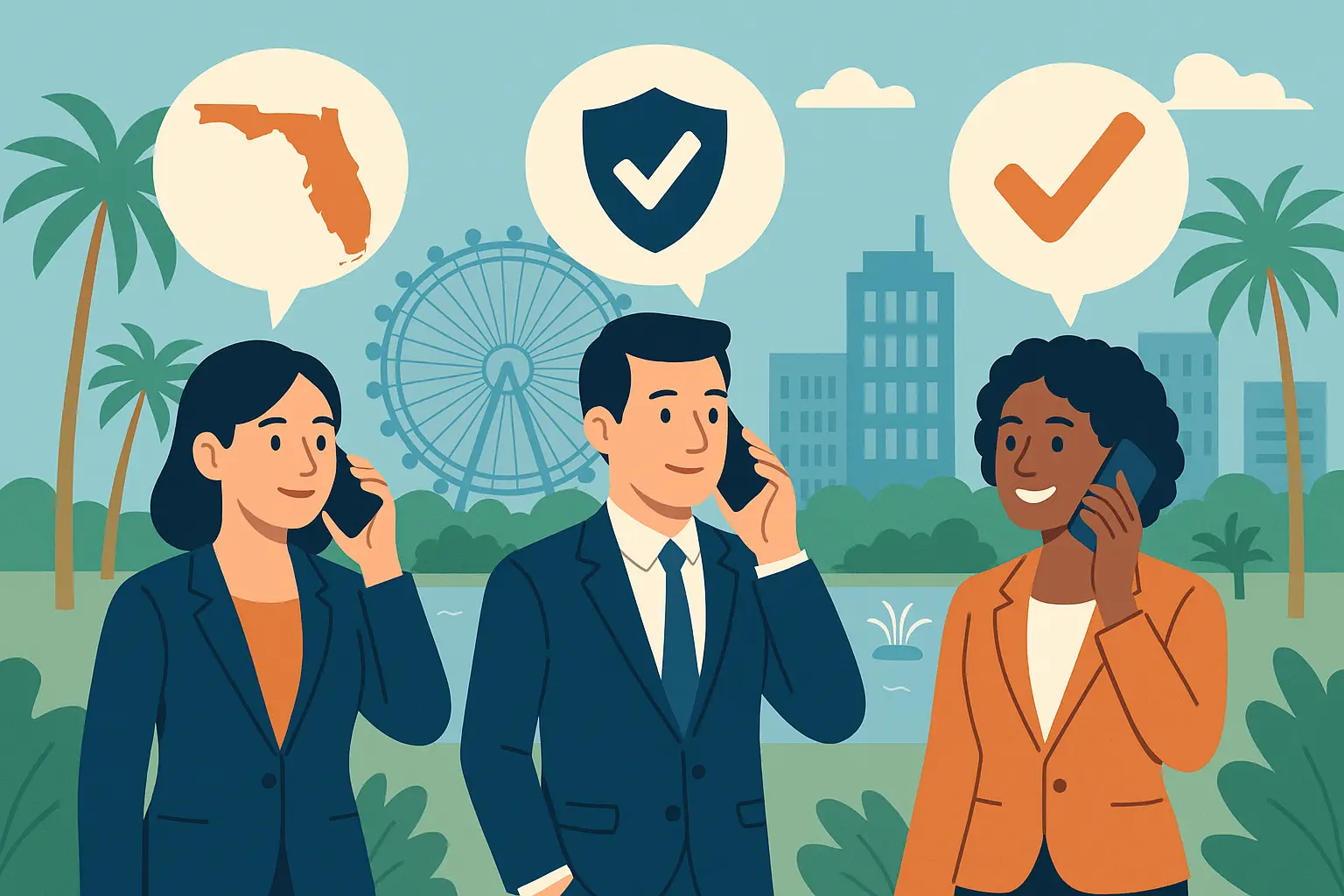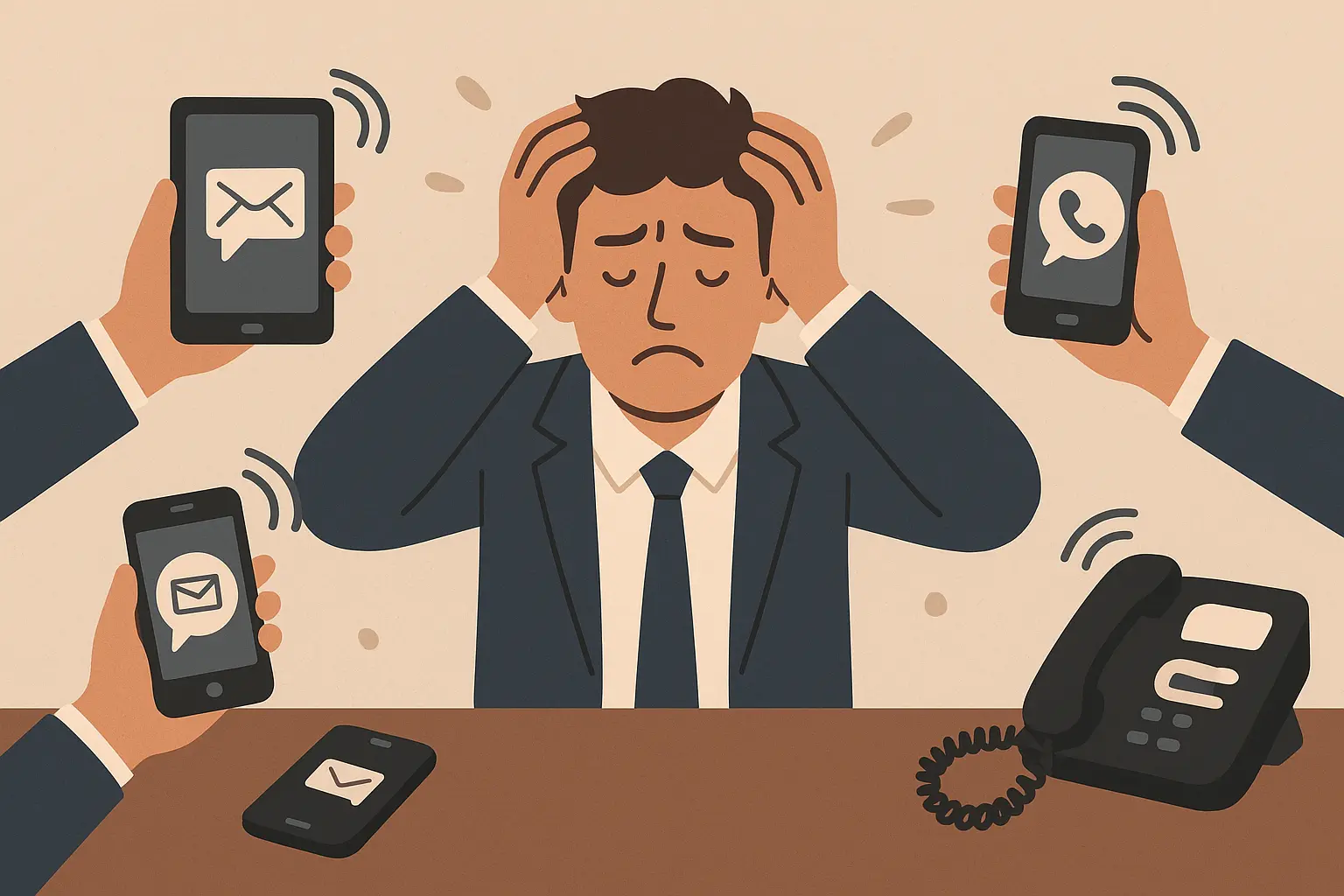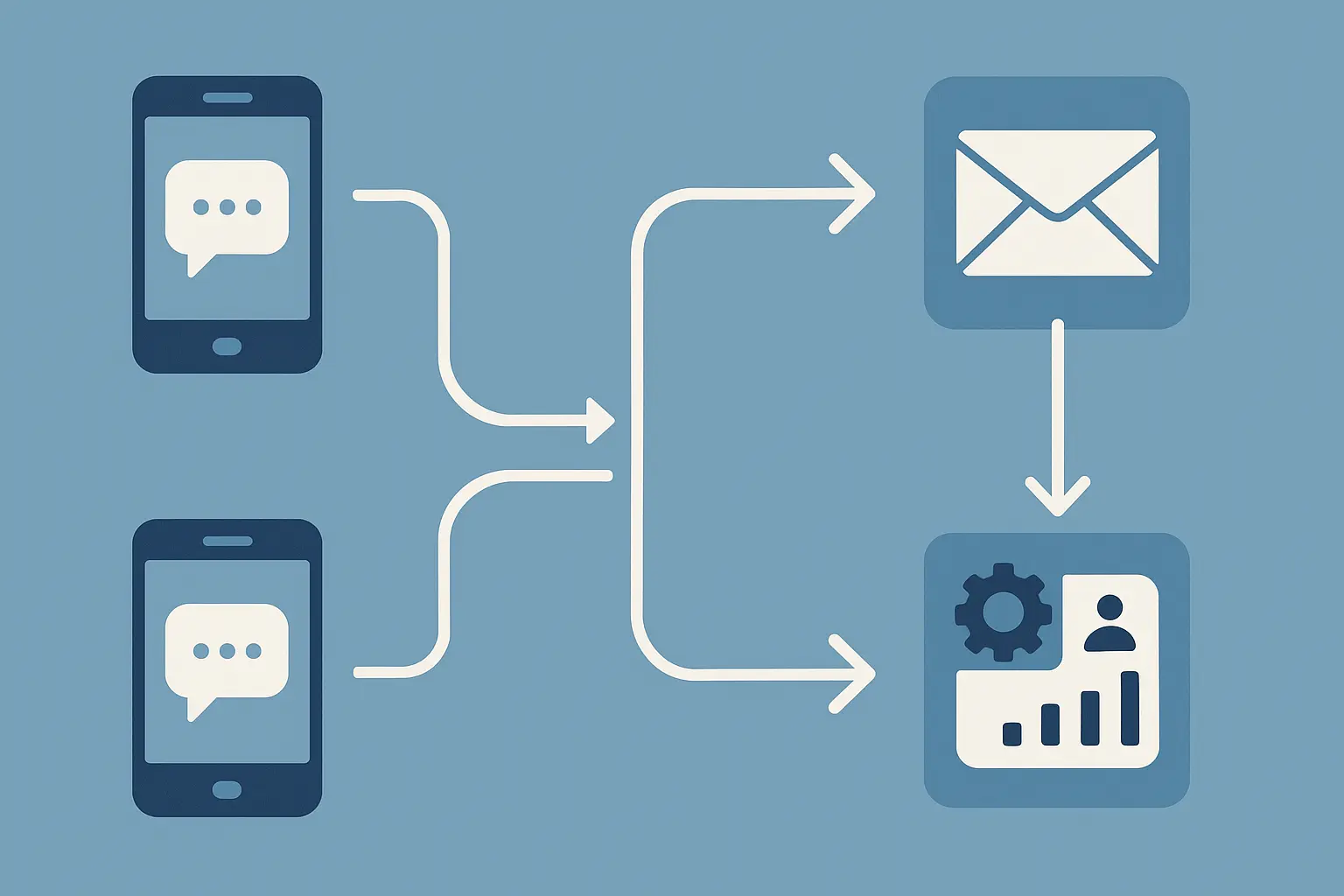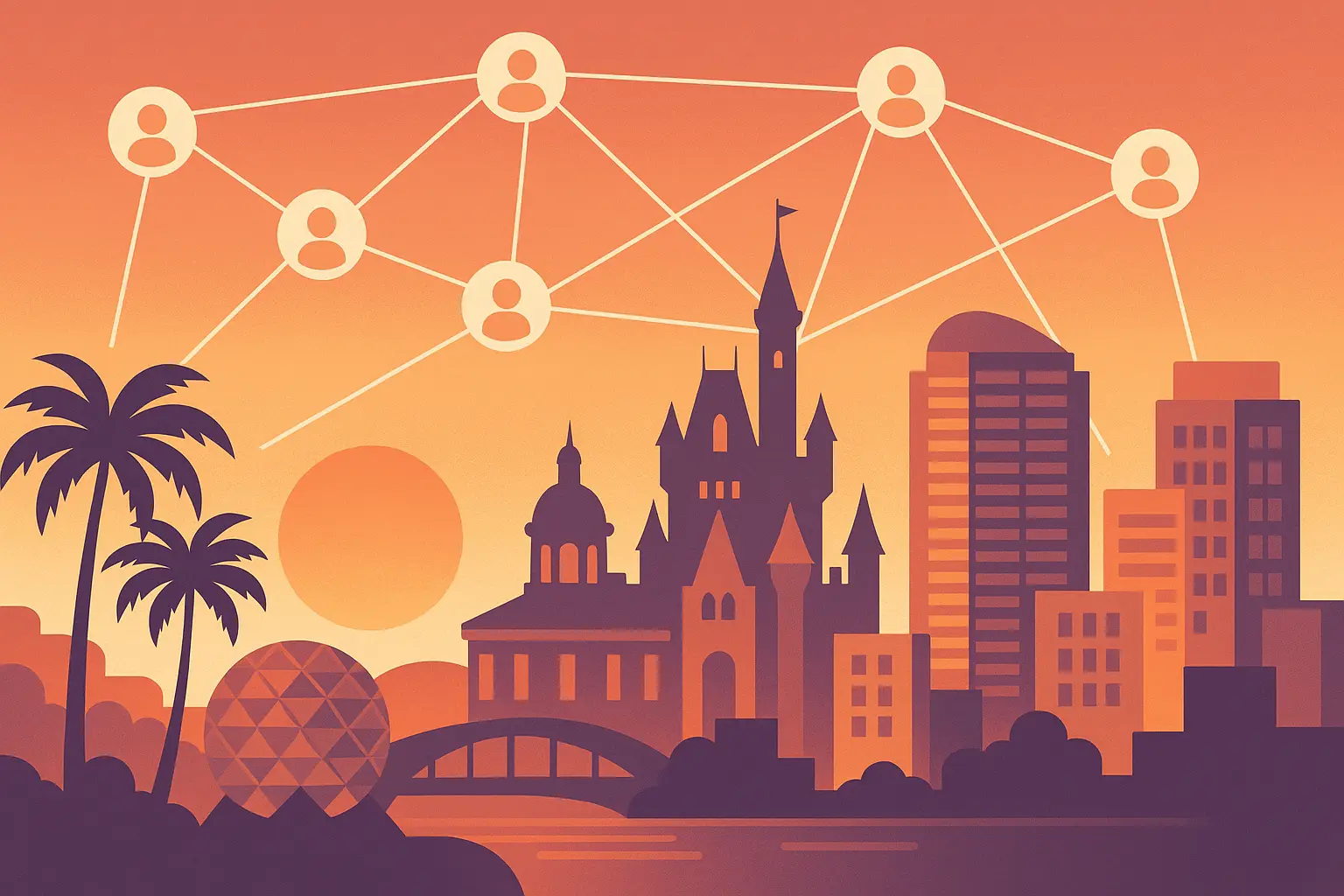Living in Central Florida for years has taught me something most people overlook – your area code actually matters. The 407 serves over 2.2 million of us, making it one of Florida’s busiest phone networks. Whether you’re running a business on International Drive or just moved to Winter Park, understanding how it all works can save you some real headaches and maybe even help your business succeed.
Our area code covers way more than Orlando’s city limits. We’re talking about a phone system that handles everything from Disney World’s massive call volumes to your neighborhood pizza place’s delivery orders. With 1,122,555 males and 1,157,214 females calling this region home according to ZipAtlas demographic data, the demand for reliable phone service has never been higher.
Table of Contents
Table of Contents
-
Where 407 Really Reaches
-
The Real Story Behind 407’s Creation
-
The Boring (But Important) Technical Bits
-
Why Your Business Needs a 407 Number
-
How Modern Communication Tools Help 407 Users
-
Final Thoughts
TL;DR
The 407 covers Orlando and surrounding Central Florida communities, serving as our region’s main phone identifier. Created in 1988 from a split of the original 305, it now shares territory with the 321 overlay that launched in 1999.
All calls within our region require 10-digit dialing because of this dual system. Having a 407 number carries serious local credibility and business advantages in Central Florida’s tourism-driven economy. Modern SMS forwarding solutions help businesses manage the crazy volume of text communications that’s become normal here.
407 numbers connect you to everything from theme park reservations to emergency services across multiple counties. The system handles millions of daily communications for residents and the 75+ million tourists who visit our area each year.
Where 407 Really Reaches
The 407 isn’t just Orlando – it’s a massive phone network covering the economic heart of Central Florida. I’ll break down exactly which communities fall under this system and why the coverage matters for residents and businesses.
Most people think 407 means Orlando, but the reality covers way more ground. We’re talking about portions of Orange, Seminole, Lake, and Osceola counties all sharing the same phone infrastructure. This setup reflects how people actually live and work across Central Florida, where county lines don’t really matter for daily life.
Orlando’s Core Gets Priority Treatment
Downtown Orlando, International Drive, and the theme park corridor represent the densest part of 407 coverage. These areas handle massive call volumes daily, making them the phone backbone of Central Florida’s economy.
Where the Magic Happens Downtown
The heart of our territory includes Orlando’s bustling downtown core, the famous I-Drive tourist strip, and the theme park corridor. These aren’t just addresses – they’re the nerve center of a multi-billion dollar tourism industry that depends on reliable phone service.
You’ve probably noticed how busy these areas get, especially if you’ve ever tried calling a restaurant on I-Drive during peak season. The concentration of hotels, restaurants, attractions, and businesses here creates some of the highest phone traffic in Florida. Universal CityWalk alone can generate thousands of calls and texts in a single evening during busy periods.
Consider what happens at Universal CityWalk during peak season. A single restaurant might receive over 200 phone calls and 150 text messages in one evening, ranging from reservation requests to delivery orders to customer service inquiries. Without proper number management and automated systems, staff would spend more time answering phones than serving customers.
Suburban Communities That Keep Growing
Winter Park, Altamonte Springs, and Apopka represent the suburban expansion of our coverage. These communities blend residential neighborhoods with thriving business districts, creating diverse communication needs across the region.
Winter Park’s upscale shopping and dining scene operates differently from Altamonte Springs’ corporate offices or Apopka’s growing residential developments. Each community has developed its own character while staying connected to Orlando’s economic engine through the phone network.
Beyond Orlando’s City Limits
The area code extends far beyond Orlando proper, covering portions of multiple counties and creating a comprehensive phone network. This expansion reflects Central Florida’s interconnected economy and population growth patterns that cross traditional boundaries.
Orange County’s Hidden Gems
Communities throughout Orange County fall under 407 coverage, each serving different demographics and economic needs. From luxury lakefront properties in Windermere to diverse working-class neighborhoods in Pine Hills, these areas showcase the variety within our region.
Windermere’s million-dollar homes and Ocoee’s family-friendly suburbs might seem worlds apart from Pine Hills’ urban landscape, but they’re all part of the same phone network. This diversity creates interesting challenges for businesses trying to serve the entire market effectively.
|
407 Coverage Area |
Population Density |
Primary Business Type |
Communication Volume |
|---|---|---|---|
|
Downtown Orlando |
High |
Tourism/Entertainment |
Very High |
|
Winter Park |
Medium-High |
Retail/Professional |
High |
|
Altamonte Springs |
Medium |
Corporate/Residential |
Medium-High |
|
Windermere |
Low-Medium |
Luxury Residential |
Medium |
|
Pine Hills |
High |
Urban Residential |
High |
|
Apopka |
Medium |
Mixed Residential/Commercial |
Medium |
When County Lines Don’t Matter
Parts of Seminole, Lake, and Osceola counties also use 407 numbers, creating a phone region that crosses traditional county boundaries. This setup reflects how people actually live and work across Central Florida.
Your number might connect you to someone in Seminole County just as easily as downtown Orlando. The phone system recognizes what locals have always known – Central Florida operates as one interconnected region, regardless of county lines.
For businesses managing communications across these diverse communities, understanding how to forward text messages to an email address can help centralize customer inquiries from multiple locations into one manageable system.
Theme Parks Drive Special Requirements
Walt Disney World Resort areas, Universal Studios vicinity, and other major tourist destinations require robust phone infrastructure to handle millions of visitors annually. These areas have unique communication needs that go far beyond typical residential or business requirements.
Disney World alone generates more phone traffic than many entire cities. Universal Studios, SeaWorld, and countless smaller attractions add to this load. The infrastructure supporting these areas has to handle everything from guest services to emergency communications for local users and visitors from around the world.
The Real Story Behind 407’s Creation
The 407 didn’t just appear overnight – it emerged from Florida’s explosive growth in the 1980s and the phone industry’s struggle to keep up. Understanding this history helps explain why Central Florida’s phone system works the way it does today.
Now here’s where it gets interesting. The significance of our area code continues to grow in modern Central Florida culture. “Orlando celebrates local pride with the unveiling of new Lynx bus wrap on 407 Day” Orlando Economic Partnership reported that the annual 407 Day celebration in 2025 marked the fifth anniversary of this community tradition, expanding from a single day to an 18-day celebration honoring both the 321 and 407 that serve Central Florida.
When Florida Outgrew Its Phone System
The original 305 covered all of Florida until population growth made that impossible. The split in 1988 marked Central Florida’s emergence as a major phone market worthy of its own area code.
The split from 305 to 407 created similar challenges that other Florida regions face today, much like the 305 area code secrets that continue to impact Miami-Dade businesses dealing with their own phone evolution.
1988 Changed Everything
Our area code launched in 1988 when Florida’s rapid growth overwhelmed the original 305 system. This wasn’t just a technical change – it marked Central Florida’s transformation into a major economic region that needed its own phone identity.
Before 1988, calling anywhere in Florida meant dialing 305. The state’s population boom, thanks largely to retirees and the growing tourism industry, made this system unsustainable. Central Florida’s emergence as a distinct economic region made it the logical choice for the first major area code split.
Disney World had opened in 1971, and by the late 1980s, the tourism boom was creating unprecedented demand for phone services. The 407 designation gave our region its own identity separate from Miami’s 305, which made sense given how different our economies had become.
Growing Pains Led to More Changes
Even after getting its own area code, Central Florida’s continued growth created new challenges. The introduction of the 321 overlay in 1999 solved capacity problems but created new complications for residents and businesses.
321 Joins the Party
By 1999, even 407 couldn’t handle Central Florida’s phone demand. The 321 was introduced as an overlay, meaning both codes serve the same geographic area but are assigned to different phone numbers.
This overlay system solved the capacity problem but created confusion. Suddenly, your neighbor might have a 321 number while you kept your 407. Both numbers work in the same places, but the psychological impact was real – many people still prefer 407 numbers for their established local recognition.
Speaking of which, a local real estate office discovered that listings with 407 contact numbers received 23% more inquiries than identical listings with 321 numbers. This difference persisted even though both area codes serve exactly the same geographic region, demonstrating the continued preference for the original designation.
10-Digit Dialing Becomes the New Normal
The overlay system forced everyone in the region to use 10-digit dialing for all calls, even local ones. This change affected how people think about phone numbers and created new challenges for businesses and residents throughout the region.
Remember when you could dial just seven digits for local calls? Those days ended with the 321 overlay. Now every call requires the full area code, which initially frustrated many residents but has become second nature. This change also affected how businesses display their phone numbers and how people memorize contacts.
The Boring (But Important) Technical Bits
Behind every 407 phone call lies a complex system of number assignments, carrier protocols, and regulatory requirements. While most people don’t need to understand these details, knowing the basics can help explain why certain numbers are available and how the system really works.
How Your 407 Number Gets Assigned
The process of getting a number involves more than just availability – it depends on central office codes, carrier assignments, and geographic considerations that most people never think about.
When businesses acquire new numbers, they often need to understand how to enter a phone number in international format for proper system integration and global accessibility.
Central Office Codes Make the Difference
The three digits following 407 (called central office codes) aren’t random – they’re assigned to specific phone providers and geographic sub-regions. Understanding this system helps explain why some numbers are easier to get than others.
When you request a number, you’re not getting any available combination. The middle three digits determine which part of the network handles your calls and which company manages your service. Some codes are more desirable than others, either for their geographic associations or their ease of remembering.
Why You Always Need 10 Digits Now
The requirement for 10-digit dialing in the 407/321 region reflects modern phone realities and the overlay system’s technical requirements. This change affects everything from business cards to automated systems.
The Overlay System Demands It
Since both 407 and 321 numbers exist in the same geographic area, the phone system needs the area code to determine how to route every call. This technical requirement has practical implications for how people use their phones daily.
Your phone can’t guess whether 555-1234 is a 407 or 321 number without you specifying. The system requires this information to route calls correctly, which is why even calling your next-door neighbor requires the full 10-digit number. Automated systems, business phone trees, and even simple contact lists had to be updated to accommodate this change.
But here’s what most people don’t realize – with 64.9% of our region’s population actively participating in the labor force, according to ZipAtlas employment data, the demand for reliable business communications has never been higher. This workforce of 1,195,034 people generates millions of daily phone calls and text messages across the region.
Why Your Business Needs a 407 Number
In Central Florida’s competitive business environment, your area code isn’t just a number – it’s a signal of local credibility, market understanding, and community connection. The 407 carries weight that can impact customer trust and business success in ways many companies underestimate.
Local Credibility Opens Doors
Central Florida consumers and business partners often view 407 numbers as indicators of local presence and community investment. This perception can influence purchasing decisions and business relationships in ways that many companies underestimate.
Customers Trust Local Numbers
Many Central Florida residents prefer doing business with companies that have 407 numbers because it suggests local presence and accountability. This preference is particularly strong in service industries where customers want to know they can reach someone nearby.
AC breaks in July? You’re calling the 407 number, not some 800 number from who-knows-where. It’s about trust – local companies get Orlando summers. They understand that when your air conditioning dies during a heat wave, you need someone who can be there fast, not someone reading from a script in another state.
The economic strength of our region supports this local preference, with a median household income of $79,646 according to ZipAtlas income data. This affluent customer base has the buying power to choose service providers carefully, often favoring businesses that demonstrate local commitment through their phone numbers.
Tourism Industry Recognition
The 407 has become synonymous with Orlando’s tourism industry, making it valuable for hospitality, entertainment, and service businesses that cater to visitors. This association can be a powerful marketing tool when used strategically.
Tourists planning their Orlando vacation often feel more confident booking with companies that have 407 numbers. The area code signals that you’re part of the established tourism infrastructure, not some fly-by-night operation. Hotels, restaurants, tour companies, and attractions all benefit from this psychological association.
The tourism connection remains strong in 2025, as evidenced by the expanded 407 Day celebration. “Deals & Discounts: Celebrate 407 Day in Orlando” Orlando Date Night Guide reported that over 50 local businesses participated in the 2025 celebration with special offers, demonstrating how deeply the identity is woven into the region’s business community.
Managing High-Volume Communications
Businesses in our region face unique communication challenges due to the area’s tourism-driven economy and high call volumes. Modern communication management becomes essential for maintaining customer service quality and operational efficiency.
Here’s what busy looks like in Orlando:
-
Hotels field 200+ calls daily (doubles during peak season)
-
Restaurants juggle reservations, takeout, and “do you have a table right now?” calls
-
Tour companies get slammed with 300% more calls during holidays
-
Service providers handle everything from routine maintenance to emergency repairs
Text Messages Pile Up Fast
The high volume of business communications in the Orlando area means many number holders receive overwhelming amounts of text messages for customer service, reservations, and business coordination. Without proper management systems, important messages can get lost in the flood.
Restaurant reservations, hotel bookings, tour confirmations, customer complaints, and service requests all arrive via text throughout the day. During peak tourist seasons, some businesses receive hundreds of SMS messages daily. Managing this volume manually becomes impossible, leading to missed opportunities and frustrated customers.
Ever sent a text to a local business and never heard back? They probably received your message but couldn’t keep up with the volume. This communication breakdown costs businesses money and damages their reputation in a market where customer service can make or break success.
A popular International Drive restaurant discovered they were missing 40% of reservation requests sent via text during busy weekends. After implementing an automated SMS forwarding system, they captured every message and saw a 60% increase in weekend bookings within the first month.
How Modern Communication Tools Help 407 Users
The unique challenges of managing communications in Central Florida’s fast-paced, tourism-driven market have created demand for sophisticated solutions. Auto Forward SMS addresses these specific pain points that our area code users face daily.
Central Florida’s business environment creates perfect storm conditions for communication overload. Tourism operates 24/7, customers expect immediate responses, and businesses often manage multiple locations across the region. Traditional phone and text management simply can’t keep up with our region’s demands.
For businesses new to automated messaging systems, getting started with AutoForward SMS for the first time provides essential setup guidance specifically designed for high-volume business environments.
Some businesses use automated forwarding to manage the text flood – messages go straight to email or team systems instead of getting buried in someone’s phone. This means reservation requests don’t get lost in a busy manager’s phone, customer complaints reach the right department immediately, and important communications get handled even when staff aren’t actively monitoring phones.
The system’s keyword filtering proves especially valuable for local businesses. A hotel can automatically route reservation texts to the front desk, maintenance requests to facilities, and complaints to management – all based on message content. This level of automation helps businesses maintain the responsive customer service that Central Florida’s competitive market demands.
For multi-location businesses common in the Orlando area (think restaurant chains or hotel groups), automated forwarding enables centralized message management. Instead of each location handling communications separately, messages can be forwarded to regional managers or centralized customer service teams.
Many businesses also benefit from how to forward text messages to a Slack channel for team-based customer service management across multiple Orlando locations.
407 Business Communication Checklist:
-
Secure a 407 number for local credibility
-
Set up automated SMS forwarding to prevent missed messages
-
Configure keyword filtering for different message types
-
Train staff on 10-digit dialing requirements
-
Create backup communication systems for peak seasons
-
Monitor response times during tourist season spikes
-
Integrate phone and text systems with booking platforms
-
Establish emergency communication protocols
-
Test all systems before major events or seasons
-
Review communication analytics monthly
Ready to streamline your 407 business communications? Try Auto Forward SMS free for 7 days and see how automated message forwarding can transform your customer service efficiency.
Final Thoughts
The 407 represents more than just a phone identifier – it’s a symbol of Central Florida’s growth, economic importance, and unique position in American business and tourism. From its creation in 1988 to today’s complex overlay system with 321, the area code has evolved alongside the region it serves.
Understanding these details helps you make better decisions about your communications, whether you’re choosing a phone number for your business, managing customer service operations, or simply trying to understand why you have to dial 10 digits for every call. Our area code will continue evolving as Central Florida grows, but its significance as a marker of local identity and business credibility seems likely to endure.
Bottom line? Your 407 number is more than digits – it’s your local street cred. Use it right, and it opens doors in a region where everyone’s competing for the same tourists and residents.
